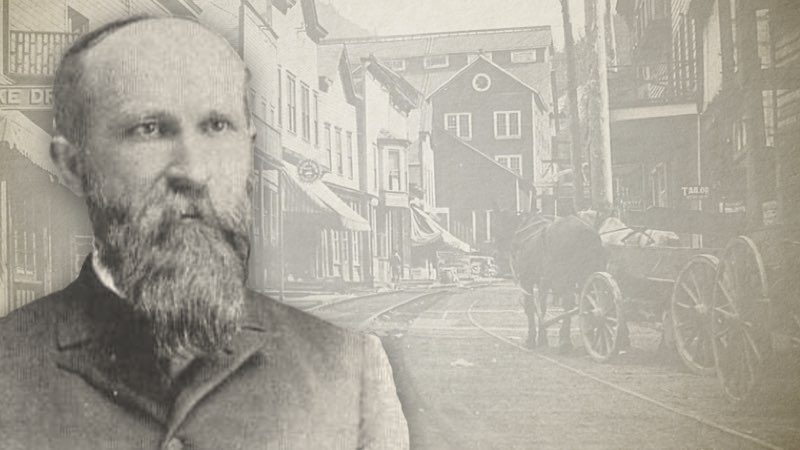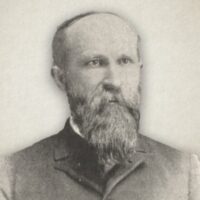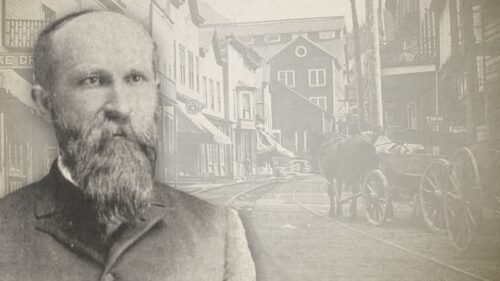
Chapter 16: Waldensean Period (Concluded)
We left off the history of the Waldenses at the close of chapter twelfth, in order to give some account of the heresies and corruptions of the Catholic party, which gave rise to the reformation of the sixteenth century.
We are told that when the witnesses “shall have finished their testimony, the beast that ascendeth out of the bottomless pit shall make war against them and shall overcome them, and shall kill them.” (Rev. 11:7)
This prophecy had its fulfillment in the year 1686, when the Waldenses in the valleys of Piedmont were either all killed or driven to other countries.
A continuation of their history is a continuation of the same old story of persecutions, trials and sufferings. If the reader grows tired of this, he must remember that much of the history of the Baptists is written in blood, and it can only be read by the lighted fires of the martyrs who suffered for their faith during the dark ages. Our enemies have, for us, preserved our history in this way, and it can be traced only by the blood-stained footprints of a people of “whom the world was not worthy.”
A.D. 1550. About the middle of the sixteenth century, Francis I., king of France, obtained possession of the whole of the Piedmont country, by conquest, and regulated its affairs by means of its parliament at Turin. Paul III., then pope of Rome, so influenced parliament that the severe persecutions, which the Waldenses had suffered in France, were now reenacted in Piedmont, and numbers of Waldenses were committed to the flames. In their distress they appealed to the king, but he turned a deaf ear to their cry, and commanded them to be regulated, in the concerns of religion, by the Romish church. They were then commanded by parliament to send away their pastors on pain of death and in their room to receive priests belonging to the Catholic church to conduct their worship and say masses for them.
The Waldenses replied that they could obey no commands which interfered with the laws of God.
A.D. 1555. Parliament then relinquished the matter to the inquisition and many of the Waldenses were burned to death. This was in the year 1555.
Not long after this the inquisitors appointed a person to go through the valleys, armed with the king’s authority to compel the Waldenses either to conform to the church of Rome or be put to death.
The Waldenses in Calabria about the same time were suffering severe persecutions. At one time eighty persons had their throats cut, and afterwards their bodies were divided into four quarters. Thirty miles were then planted with stakes, and a quarter of a human being was placed upon each of these stakes. At one time a young man was carried to the top of a tower where he was commanded to confess himself to a priest, who was present. This he refused to do, replying that he had already confessed himself to God. He was then cast headlong from the tower. The next day as the viceroy was walking at the foot of the tower he saw the young man still alive, but suffering from having nearly all his bones broken. The viceroy kicked him on the head, exclaiming, “Is the dog yet alive? Give him to the hogs.”
These are but samples of the brutal outrages carried on at this time against the Waldenses in Calabria. This was done too, in the name of Christianity, and by the authority of “the church.” Was this a church of Christ?
A.D. 1601. In the year 1601, the Duke of Savoy issued a decree against the Waldenses, in which he allowed them fifteen days to renounce their religious profession and go to mass, or eke to depart from his dominions, and never to return without permission, under penalty of death.
More than five hundred families were driven by this act into exile! Some crossed the Alps and retired into Dauphiny, in France. Others went to Geneva, and still others sought refuge among their friends in the valleys of Piedmont.
Mr. Orchard, referring doubtless to this same circumstance, though the dates do not exactly correspond, says that two millions of persons were condemned by this cruel instrument, and banished from their native soil. “If any remained it was at the peril of life and liberty; yet some braved the danger, and worshipped unseen and unheard by malicious foes. ‘Pious females shrouded by the night, bent their way amidst darkness and danger towards the spot assigned for their religious services. To such an assembly how eloquent must have appeared the lessons of that preacher, who braved death at every word he uttered; how impressive that service, the attending of which incurred the penalty of fetters for life.'”
Owing to the severe persecutions which had scattered the Waldenses abroad in different lands, and owing to the further fact that sects had begun to multiply in consequence of the reformation, and some of the Waldenses had abandoned their former faith, and united with the reformed churches, the scattered Waldenses, in France, republished their Articles of Faith in 1655. (For a copy of their Articles of Faith as published in the year 1120, see page 118.) No one who is acquainted with Baptist principles will doubt for a moment that these Waldenses were Baptists, and held the same doctrines which characterize Baptists at the present day.
The Waldenses were not the only people who suffered persecution at the hands of the Catholics. In the year 1685, an effort was made by Louis XIV., of France, to force Presbyterians—Calvinists as they were then called—back into the Catholic church.” The cruelties inflicted upon them at this time,” says Mr. Jones, “if possible surpass in atrocity anything that is to be found in the persecutions of the first Christians. ‘They cast some into large fires and took them out when they were half roasted. They hanged others with ropes under their arms, and plunged them several times into wells till they promised to renounce their religion. They tied them like criminals on the rack, and by means of a funnel, poured wine into their mouths, till being intoxicated, they declared that they consented to turn Catholics. Some they cut and slashed with pen knives, others they took up by the nose with red-hot tongs, and led them up and down the rooms till they promised to turn Catholics.’ These cruel proceedings caused eight hundred thousand persons to quit the kingdom.”
The governor of the valleys of Piedmont at once issued a proclamation forbidding any stranger from going into the valleys and remaining above three days, without permission, on pain of being severely punished. This proclamation seemed mysterious to the inhabitants, until it was ascertained that it was intended to prevent them from furnishing shelter to their persecuted brethren.
A.D. 1686. In the year 1686, “the people were amazed at the publication of an order from the Duke of Savoy, forbidding his subjects the exercise of the Protestant religion upon pain of death, the confiscation of their goods, the demolition of their churches, and the banishment of their pastors. All infants born at that time, were to be baptized and brought up in the Roman Catholic religion, under the penalty of their fathers being condemned to the galleys and their mothers whipped.”
If any one thinks that such acts of cruelty should not be recorded upon the pages of history, let him remember that only in this way can the people be educated, and that in religious, as well as political matters, “eternal vigilance is the price of liberty.”
History repeats itself, and it is the boast of some that she never changes. The Catholics have declared their purpose, when they come into power, to put religious liberty to an end in this country. Should they ever possess the power, scenes like those here recorded will be repeated. Let the alarm be sounded now, and let the people watch with a jealous eye for every encroachment upon their religious privileges.
The work of the destruction of the witnesses was not yet complete. The “beast” was yet to drink more deeply of the blood of the saints, and the woman “arrayed in purple and scarlet,” was yet to have her garments more deeply dyed.
Mr. Jones says: “The armies of France and Savoy having inhumanly butchered a multitude of the Waldenses, committed more than twelve thousand of them to prison, and dispersed two thousand of their children among the Catholics; concluding that their work was accomplished, they caused all their property to be confiscated.
“And thus were the valleys of Piedmont depopulated of their ancient inhabitants, and the light of the glorious gospel extinguished in a country where for many preceding centuries, it had shone with resplendent lustre.”
The same historian says that more than ten thousand of these prisoners were distributed among fourteen prisons, or castles, in Piedmont. They were fed for months upon bread and water alone. The bread contained lime, glass and filth of various kinds, while the water brought from stagnant pools, was scarcely fit for the use of cattle.
The prisons were so crowded that in the heat of the summer months, they became intolerable and deaths were daily taking place. Especially women in a delicate condition were unable to endure the hardships of such a prison life, and many died for want of attention.
The greatest precaution had been taken in the imprisonment of these down-trodden people, to separate the different members of the same family. The husband was carefully separated from his wife, and the parent from the child, in order to deprive them of the comforts and consolation of each other’s society.
A.D. 1686. These people had been imprisoned in April, 1686, and in September following, the Swiss Cantons convened a general assembly, at Avon, to devise some measures for their release. This was accomplished in October following, and the Duke of Savoy issued his proclamation for their release. The ground was now covered with snow and ice, and the victims of cruelty were emaciated through poverty and disease, and entirely unfit for the journey before them, for the condition of their release was that they should quit the country.
“The proclamation was made, and at five o’clock the same evening, they were to begin a march of four or five leagues! Before the morning more than a hundred and fifty of them sunk under the burden of their maladies and fatigues and died. The same thing happened to the prisoners at Fossan. A company of them halted one night at the foot of Mount Cenis; when they were about to march the next morning, they pointed the officer, who conducted them, to a terrible tempest upon the top of the mountain, beseeching him to allow them to stay until it had passed away. The inhuman officer, deaf to the voice of pity, insisted on their marching; the consequence of which was, that eighty-six of their number died, and were buried in the horrible tempest of snow.
Some merchants that afterwards crossed the mountains, saw the bodies of these miserable people extended on the snow, the mothers clasping their children in their arms!”
These persecuted and down-trodden Baptists finally found a home—an asylum in Switzerland. I can do no better than quote further from Mr. Jones on this subject.
“At Geneva they experienced that kind and hospitable reception which was due to them as their fellow creatures, and more especially as their persecuted Christian brethren. They clothed the naked, fed the hungry, succored the afflicted and fed the sick. But what pen can describe the affecting scene which now took place while they halted at Geneva, for rest and refreshment, before [A.D. 1686.] they proceeded to Switzerland! Those who arrived first naturally went out to meet those who came after, anxiously inquiring for their relatives and friends, of whom they had heard nothing since the fatal catastrophe in the valleys of Piedmont. The father inquired after his child, and the child after its parent; the husband sought his wife and the latter her partner in life. Every one endeavored to gain some intelligence of his friend or neighbors; but as three-fourths of them had died in prison, or on the road, it exhibited a melancholy spectacle to see so many dissolved in tears at the distressing accounts they received.”
Thus ended the Waldensean Period of the churches, in the year 1686, and the prophecy was fulfilled which declared the beast should kill them.
Though destroyed in the valleys of Piedmont, the blood of the martyrs again “became the seed of the church,” for this church was of divine origin and could not be destroyed. Beneath it were the hands of Him who had said, “Upon this rock I will build my church and the gates of hell shall not prevail against it.” We will continue to find this same people, contending for the pure word of God, and for the “faith once delivered to the saints,” ever the conservators of religious liberty and soul freedom.
It has been estimated that there have been fifty millions of persons slaughtered by Catholics since they came into existence, in the middle of the third century. This would be an average of nearly forty thousand a year since A.D. 600. Is not this church the “MYSTERY, BABYLON THE GREAT, MOTHER OF HARLOTS AND ABOMINATIONS OF THE EARTH,” which is spoken of in Revelation?
The recent utterances of Catholics declare themselves to be as intolerant today as they were during the dark ages. The spirit of Romanism is unchanged. It is still blood thirsty. Last summer three Protestants were killed in Mexico, one of them a preacher, by a mob incited by a Catholic priest. In commenting upon this act of brutality the Freeman, a Catholic paper, makes this statement: “If the killing of a few missionaries of this kind would keep others like them at home, we should almost—we Papists are so wicked!—be inclined to say, ‘On with the dance; let joy be unconfined.'”
Let no one suppose, however, because of the wickedness of the Catholic priests, and the blood thirsty spirit of that false church, that there are no Christians among the Catholics, for there are. To them God says: “Come out of her, my people, that ye be not partakers of her sin.”
Author of the “Compendium Of Baptist History”. Please inform the Editor of the AHB (via the Contact page) if you have biographical information on this author. Thank you.
Shackelford on Baptist History (Complete)




